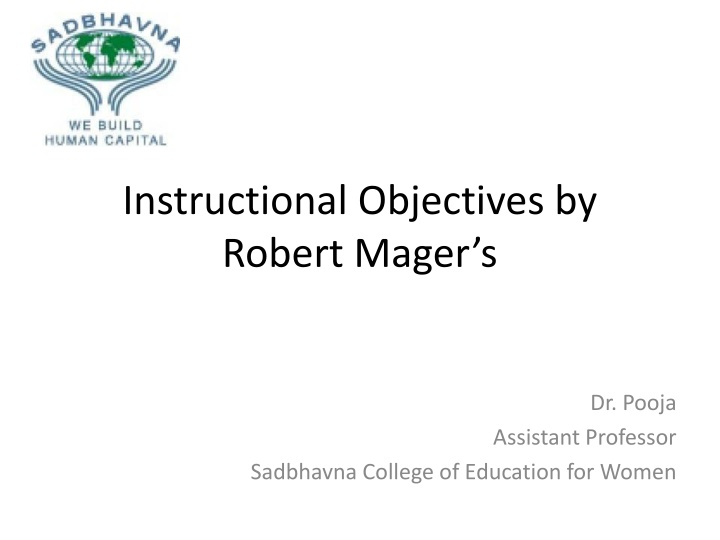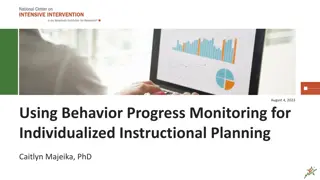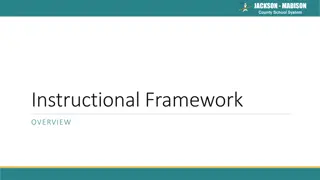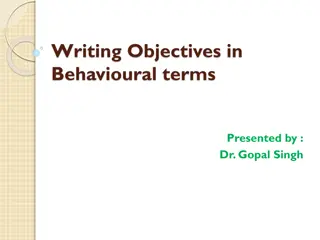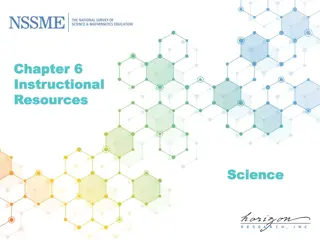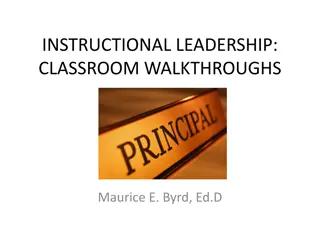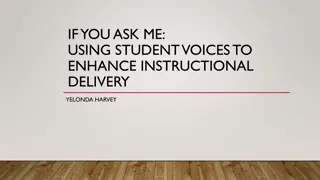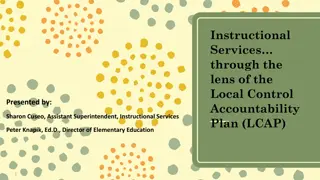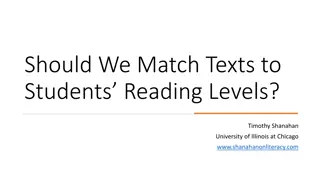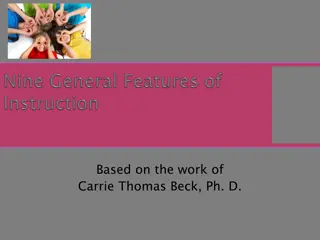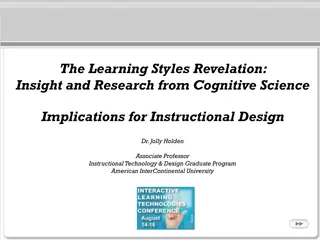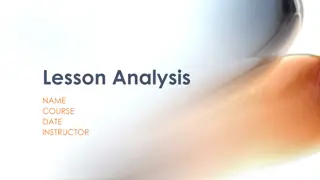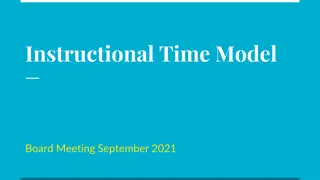Effective Instructional Objectives Overview
In this educational material, explore Robert Mager's approach to crafting instructional objectives, including writing objectives in behavioral terms and using Bloom's Taxonomy for higher-order thinking. Examples and guidelines are provided for creating clear and measurable objectives to enhance student learning outcomes.
Download Presentation

Please find below an Image/Link to download the presentation.
The content on the website is provided AS IS for your information and personal use only. It may not be sold, licensed, or shared on other websites without obtaining consent from the author.If you encounter any issues during the download, it is possible that the publisher has removed the file from their server.
You are allowed to download the files provided on this website for personal or commercial use, subject to the condition that they are used lawfully. All files are the property of their respective owners.
The content on the website is provided AS IS for your information and personal use only. It may not be sold, licensed, or shared on other websites without obtaining consent from the author.
E N D
Presentation Transcript
Instructional Objectives by Robert Mager s Dr. Pooja Assistant Professor Sadbhavna College of Education for Women
Instructional Objectives An instructional Objective is a statement that will describe what the learner will be able to do after completing the instruction (Kibler, Kegla, Barker, Miles, 1974) Robert Mager (1984) in his book Preparing Instructional Objectives, describes an objective as a collection of words and/or pictures and diagrams intended to let know what you intend for your students to achieve.
According to Robert Mager, Instructional objectives can be written in the form of students' Expected Terminal Behaviour. To write these objectives, the following should be kept in mind: 1. Identification of the terminal behaviour and it's meaning. 2. Description of the Important conditions under which the behaviour is expected to occur. 3. Specification of criteria of acceptable performance.
-Mager's approach is based on Bloom's classification of objectives for writing the objectives in behavioural terms. Mager has used 'Action Verbs' for writing the objectives. Through this process a student's behaviour and learning process can be written in behavioural terms and can be evaluated and measured with ease. - In order to write objectives of special-domain in behavioural form, appropriate related subject activities are selected. Then by linking the subject - material with work activity, objectives can be written in behavioural form.
Example The students will be able to state the Pythagoras theorem in his own word/language. The students will be able to define the Pythagoras theorem in his own word. The students will be able to verify the theorem in his own words. The students will be able to calculate the problem applying Pythagoras theorem.
Bloom Taxonomy Dr. Benjamin Bloom and his associates has developed a taxonomy of Educational Objectives in 1956. The purpose of Bloom s Taxonomy is to promote higher forms of thinking in education such that analyzing and evaluating concepts, rather than just cramming the concepts.
Three Domains of Learning Cognitive: Mental Skills or knowledge (Head) Affective : growth in feelings or emotion areas (attitude or self) (Heart) Psychomotor : manual or physical Skills (Hand)
Writing objectives in Mathematics with reference to Bloom s Cognitive Development Questions that encourage each of these skills often begin with: Knowledge: List, define, describe, show, name, what, when, etc. Comprehension: Summarize, compare and contrast, estimate, discuss, etc. Application: Apply, calculate, complete, show, solve, modify, etc. Analysis: Separate, arrange, classify, explain, etc. Synthesis: Integrate, modify, substitute, design, create, What if..., formulate, generalize, prepare, etc. Evaluation: Assess, rank, test, explain, discriminate, support, etc
Writing objectives in Mathematics with reference to Bloom s Affective Development Receiving: Ask, accept, attend, discover, observe, identify, follow, select etc. Responding: Answer, assist, complete, discuss, develop, name, obey, recognize, state etc. Valuing: Attain, complete, indicate, decide, participate, prefer, recognise etc. Organizing: Add, associate, change, integrate, judge, prepare, correlate, find, synthesize etc. Characterizing: change, characterize, decide, prove, demonstrate, verify, solve etc.
Example Topic : Circle Cognitive Domain: 1. What is a circle? 2. What is the area of circle? 3. What is the circumference of circle? 4. What is the area of a sector? Affective Domain: 1. Area of circle = x 2. Diameter of the circle = 2 x 3. Value of = 4. Circumferences of the circle = 2 x
